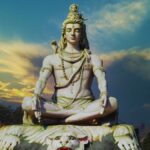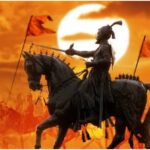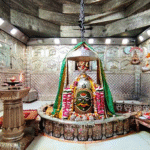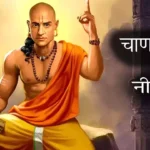In the vast, timeless wisdom of Sanatan Dharma—often referred to as Hinduism in the modern world—Lord Shiva occupies a central and deeply revered place. But who is Shiva? Is he just a deity with matted locks, ash-smeared skin, and a trident in hand? Or is there something more profound behind this symbolic form?
This blog delves into the mystical identity of Shiva, exploring his role as Mahadeva (the Great God), Adiyogi (the First Yogi), and the Supreme Consciousness (Param Tattva) in the philosophical and spiritual traditions of Sanatan Dharma.
Etymology of the Name "Shiva"

The word “Shiva” (शिव) in Sanskrit means “auspicious,” “kind,” “benevolent,” or “the one who brings bliss.” However, Shiva also signifies the dissolution of ego, ignorance, and illusions—leading the seeker toward moksha (liberation).
Interestingly, Shiva is often identified with “Shava” (a lifeless corpse) when not united with Shakti (energy). This highlights the profound truth: Consciousness without energy is inert.
Shiva in Vedic Texts
Though the name “Shiva” appears more prominently in later Puranic literature, Vedic scriptures such as the Rigveda refer to him in the form of Rudra. Rudra is depicted as a fierce, storm-associated deity:
“ॐ नमो भगवते रुद्राय” – Salutations to the fierce form of divinity, Rudra.
Over time, Rudra evolved into Shiva, the all-encompassing Supreme Being who is both destroyer and regenerator.
The Yajurveda’s Shri Rudram is one of the most sacred hymns chanted to praise Shiva, signifying his presence in all aspects of creation—from fire, water, and wind to the hearts of all beings.
Shiva as the Supreme Consciousness
In Sanatan Dharma, Shiva is not just a mythological figure—he is the formless, eternal, and infinite reality that exists beyond space and time. This is why Shiva is often associated with:
Nirguna (without form or attributes)
Nishkala (without parts or divisions)
Nitya (eternal)
Sat-Chit-Ananda (Truth-Consciousness-Bliss)
He is also referred to as “Param Shiva” in Kashmir Shaivism—the Absolute Reality from which the universe emerges and into which it dissolves.
The Trinity: Shiva, Vishnu, and Brahma
In the Trimurti (Divine Trinity) of Sanatan Dharma:
Brahma creates the universe.
Vishnu sustains and preserves it.
Shiva dissolves or transforms it.
But the deeper truth is that Shiva is beyond even this trinity. He is not just the destroyer but the eternal witness (Sakshi), observing all cosmic play (Leela).
In many spiritual schools, Shiva is seen as the primordial observer, who silently watches the rise and fall of universes—untouched, undisturbed, and ever-free.
Shiva and Shakti – The Cosmic Union
Shiva is pure consciousness, and Shakti is pure energy. One cannot function without the other.
The union of Shiva and Shakti is not just symbolic; it reflects the duality of the cosmos—male and female, stillness and motion, potential and manifestation. This is beautifully represented in the form of Ardhanarishvara, where half the body is Shiva and the other half is Parvati.
This form emphasizes that the ultimate truth is neither male nor female—it is a perfect balance of both.
Shiva as Adiyogi – The First Yogi

Shiva is also revered as Adiyogi, the first yogi and Adiguru, the first teacher. According to yogic traditions:
Shiva transmitted yogic knowledge to the Saptarishis (Seven Sages) on the banks of Lake Mansarovar in the Himalayas.
These sages then carried the spiritual science of Yoga, Meditation, and Self-Realization to different parts of the world.
This aspect of Shiva highlights him not as a religious figure, but as a spiritual scientist who provided tools to transcend human limitations.
Symbolism in Shiva’s Iconography
Every element in Shiva’s depiction carries deep spiritual significance:
| Symbol | Meaning |
|---|---|
| Third Eye | Represents spiritual wisdom and insight. Destruction of illusion. |
| Trishul (Trident) | Symbolizes control over the three gunas – Sattva, Rajas, and Tamas. |
| Crescent Moon | Time and cycles; Shiva transcends time. |
| Ganga flowing from his hair | Flow of divine knowledge and purification. |
| Snake around neck | Mastery over death and ego. Symbol of Kundalini energy. |
| Ash-smeared body | Detachment from physical world and ego. |
| Tiger skin | Victory over animal instincts. |
Each symbol reminds the seeker to overcome worldly distractions and attain inner peace and realization.
The Philosophical Dimensions: Advaita and Shaivism
Shiva plays a central role in several philosophical schools, especially:
1. Advaita Vedanta
In this non-dualistic school, Shiva is equated with Brahman—the formless, absolute reality.
“Aham Brahmasmi” – I am that absolute.
This aligns with the view that Shiva resides within all beings as the inner self (Atman).
2. Shaivism
Shaivism is one of the oldest sects of Sanatan Dharma, worshipping Shiva as the Supreme Lord. Major schools include:
Kashmir Shaivism – emphasizes Shiva as Chit (Consciousness).
Shaiva Siddhanta – popular in South India, sees the soul’s union with Shiva as the highest goal.
Pashupata Shaivism – one of the earliest ascetic traditions.
Why Shiva Matters Today
In today’s world, filled with stress, ego, distraction, and fear, Shiva’s message offers timeless relevance:
Detachment in a material world
Balance between energy and stillness
Self-realization over self-indulgence
Meditation over mental clutter
Awareness over automation
Modern spiritual seekers turn to Shiva’s path of Yoga, Meditation, and Conscious Living to rise above suffering and rediscover their true essence.
Shiva is not confined to temples or rituals. He is the silence between thoughts, the awareness behind the mind, and the truth beyond religion.
Final Thoughts
To ask “Who is Shiva?” is to embark on a journey into the deepest mysteries of the Self and the Universe.
He is not just a destroyer or deity of death. He is:
The stillness behind the storm.
The source behind creation.
The transcendence beyond time.
In Sanatan Dharma, Shiva is the Supreme Consciousness, the unchanging reality amidst the ever-changing illusion. To realize Shiva is to realize one’s own immortal, infinite nature.
As the Shiva Sutras declare:
“Chaitanyam Atma Shiva”
Consciousness itself is the Self—that is Shiva.
Om Namah Shivaya!
Related posts:
 Hindu Dharma in the Modern Age: Navigating Tradition and Transformation
Hindu Dharma in the Modern Age: Navigating Tradition and Transformation
 Shiva in the Puranas – Exploring the Legends of the Mahadev
Shiva in the Puranas – Exploring the Legends of the Mahadev
 Veer Shiva Ji: The Legendary Warrior’s Tale
Veer Shiva Ji: The Legendary Warrior’s Tale
 Shiva and Time – Why is He Called ‘Mahakaal’?
Shiva and Time – Why is He Called ‘Mahakaal’?
 Chanakya Neeti: Timeless Wisdom for Modern Life
Chanakya Neeti: Timeless Wisdom for Modern Life
 Boost Inner Strength and Discipline by Following Hanuman’s Path on Jyeshtha Mangal
Boost Inner Strength and Discipline by Following Hanuman’s Path on Jyeshtha Mangal

Pingback: Shiva in the Puranas – Exploring the Legends of the Mahadev - Ranjit Disha